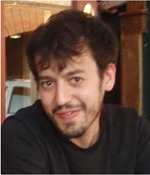Novel Algorithms for High-Quality Diagnostic and On-Board Cone-Beam CT
A Sisniega1*, M Kachelriess2*, A Wang3*, Y Rong4*, (1) Johns Hopkins University, Baltimore, MD, (2) DKFZ Heidelberg, FS05, Heidelberg, (3) Stanford University, Stanford, CA, (4) Mayo Clinic Arizona, Phoenix, AZ
Presentations
1:25 PM Data-Driven Methods for Image Reconstruction and Artifact Correction in Cone Beam CT - M Kachelriess, Presenting Author
1:50 PM New Technologies for Dual Energy Cone Beam CT - A Wang, Presenting Author
2:15 PM Translating Recent Advances in CBCT to Clinical Practice - Y Rong, Presenting Author
2:40 PM Q&A - A Sisniega, Presenting Author
TH-CD-TRACK 4-0 (Thursday, 7/29/2021) 1:00 PM - 3:00 PM [Eastern Time (GMT-4)]
Cone-beam computed tomography (CBCT) offers an imaging platform suitable for design of highly adaptable, compact, and portable systems that can be tailored to specific applications. These unique characteristics resulted in increased presence of CBCT as an on-board imaging tool (for image-guided radiotherapy, interventional radiology, and surgery) and as a diagnostic imaging tool in specific applications (e.g., breast or extremities imaging). The intrinsic advantages of CBCT are however accompanied by a number of image-quality degradation factors that include non-idealities of the imaging chain, increased scatter, and long acquisition time that results in patient motion. Those limitations have conventionally deemed CBCT as a modality suitable only to imaging of high-contrast features within a static setting. Novel developments in algorithmic approaches for CBCT acquisition, reconstruction and image processing are closing the gap, pushing CBCT towards image quality compatible with applications involving visualization of low-contrast structures in dynamic environments.
This symposium will illustrate novel developments for enhancement of CBCT image quality via data-driven methods for image reconstruction and artifact correction, new technologies for dual energy CBCT, and image-based methods for compensation of deformable motion. Finally, the symposium will cover translation of novel algorithmic approaches to clinical environments, with example application in adaptive radiotherapy.
Data-driven methods for image reconstruction and artifact correction:
Various data-driven solutions for CBCT image reconstruction and artifact reduction have been proposed. For example, methods for sparse image reconstructions, methods to reduce noise, approaches to reduce artifacts such as ring artifacts or metal artifacts, algorithms to estimate scatter in real time, or methods that estimate and compensate for patient motion. The lecture will highlight such approaches and indicate how they compare with classical algorithms.
New Technologies for Dual Energy CBCT:
Dual energy CT has become an important tool for diagnostic CT. This talk will discuss applications, approaches, and challenges for dual energy CBCT. Applications include material-specific, quantitative imaging and improved image quality; approaches include kV switching, dual layer detectors, photon counting detectors, and filters; and challenges include patient scatter and system design to optimize dual energy acquisitions.
Image-Domain Deformable Motion Compensation in CBCT:
The moderately slow acquisition time of CBCT systems often results in artifacts from involuntary patient motion. Motion in CBCT ranges from rigid displacement of bony structures to complex deformation of soft-tissues, hampering methods for tracking motion with external markers that would, furthermore, fit poorly into the workflow of image-guided procedures. This lecture will present image-based approaches to motion compensation via combination of autofocus techniques with learning-based methods.
Translating Recent Advances in CBCT to Clinical Practice:
CBCT is the most common and readily available onboard imaging system for patient positioning, target localization, inter-fractional monitoring, and even adaptive radiotherapy (ART). It has been a challenge using CBCT for ART, especially for online ART, due to inferior image quality compared to CT. Previous studies have proved that CBCT is helpful in ART for reducing the volume of irradiated healthy tissue and the dose delivered to OAR, if image quality can be improved through various post-processing algorithms or with the help of image registration algorithms. This presentation focuses on the recent advancement in CBCT image quality improvement or co-registration methods with the planning CT, for clinical application towards offline and online ART.
Learning objectives:
1. Learn about challenges to image quality in state-of-the art CBCT systems.
2. Understand approaches for image quality improvement via novel algorithms for multi-energy CBCT image processing, data-driven image reconstruction and artifacts correction, and image-based motion compensation.
3. Learn the potential for clinical application of novel approaches to high-quality CBCT.
Funding Support, Disclosures, and Conflict of Interest: Research support from Siemens Healthineers
Handouts
- 166-57567-15651646-171288-1814150253.pdf (Marc Kachelriess)
- 166-57569-15651646-171628-1063786080.pdf (Yi Rong)
Keywords
Not Applicable / None Entered.
Taxonomy
Not Applicable / None Entered.
Contact Email











